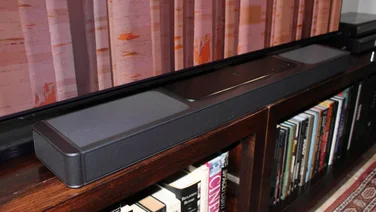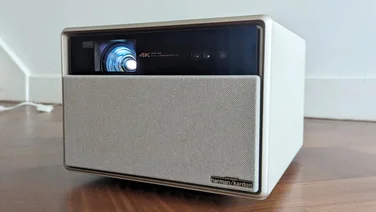To help us provide you with free impartial advice, we may earn a commission if you buy through links on our site. Learn more
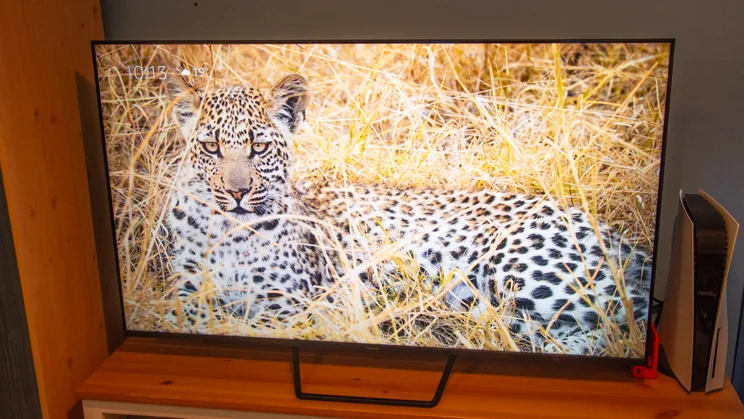
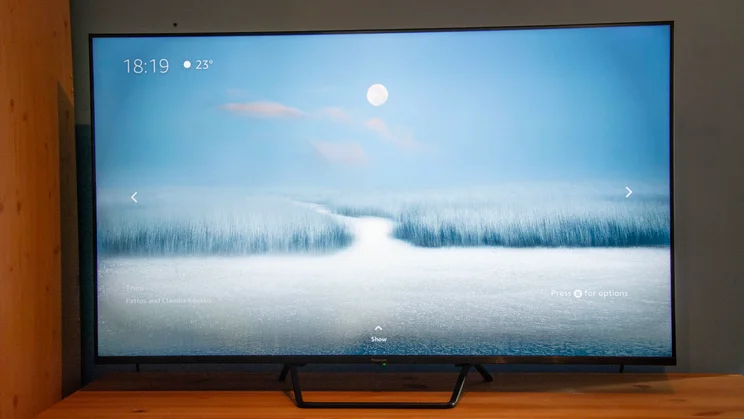
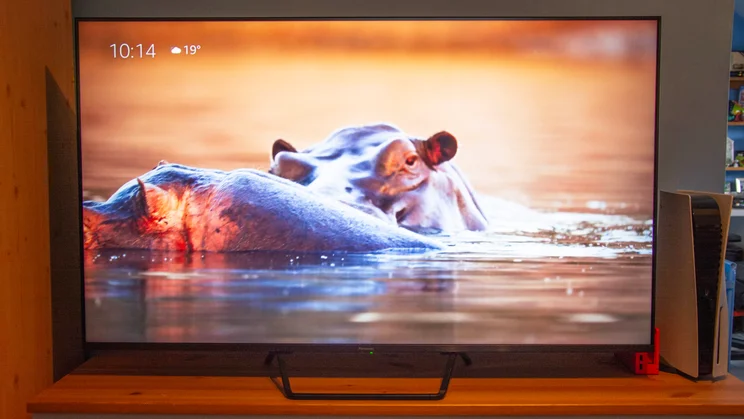
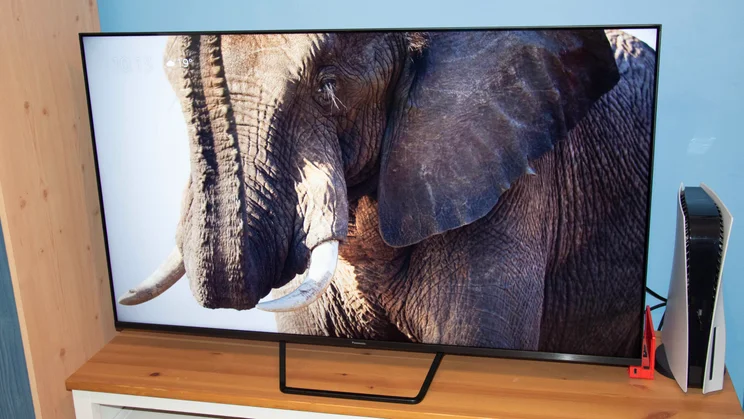
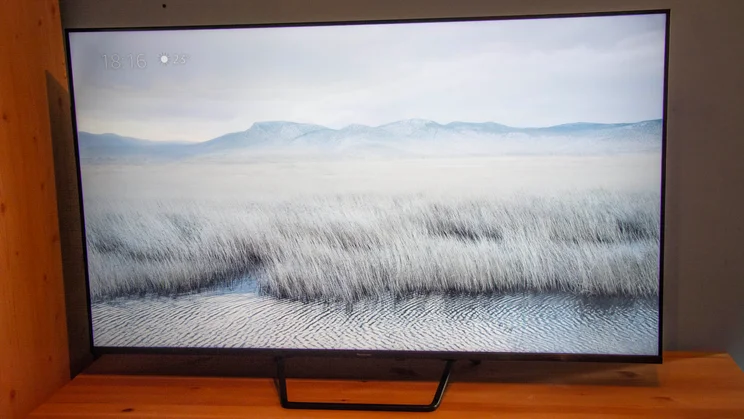
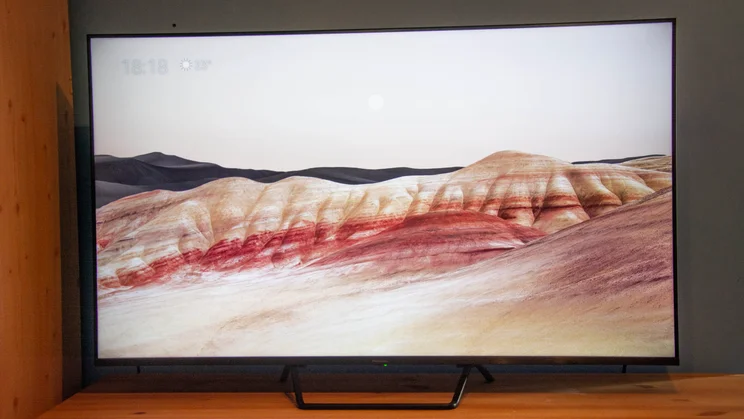
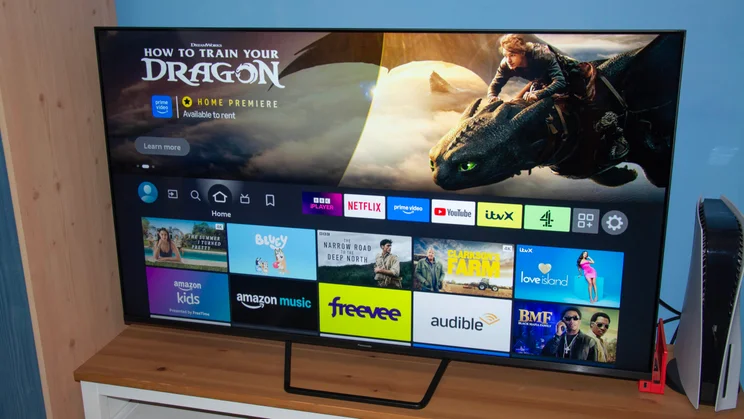
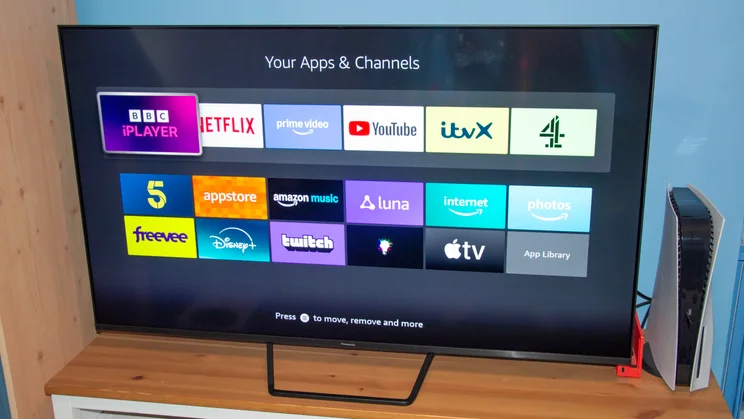
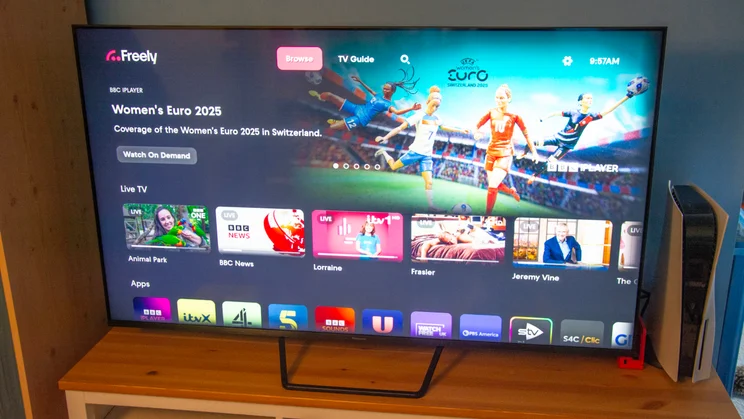
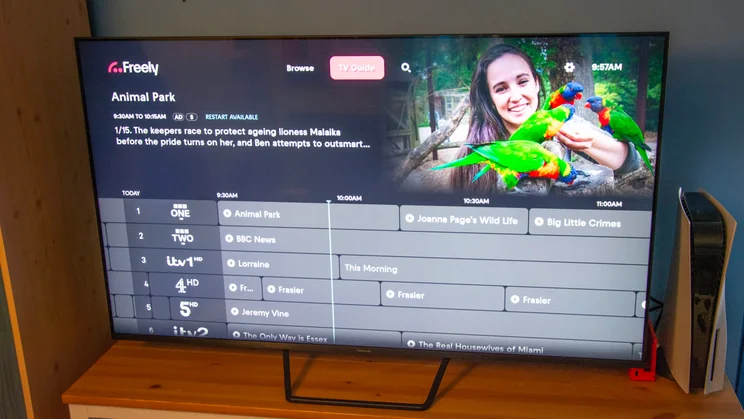
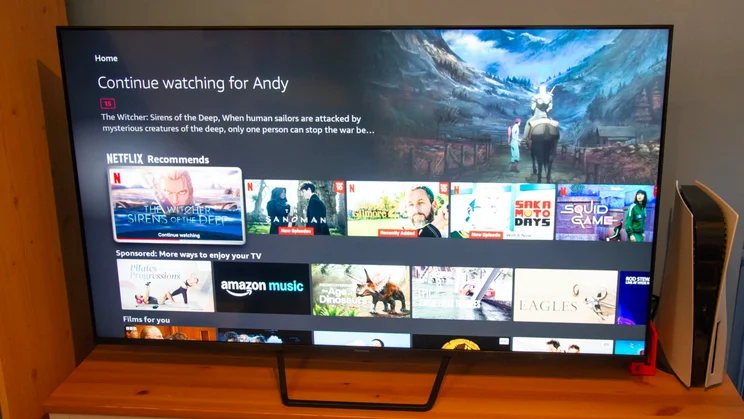
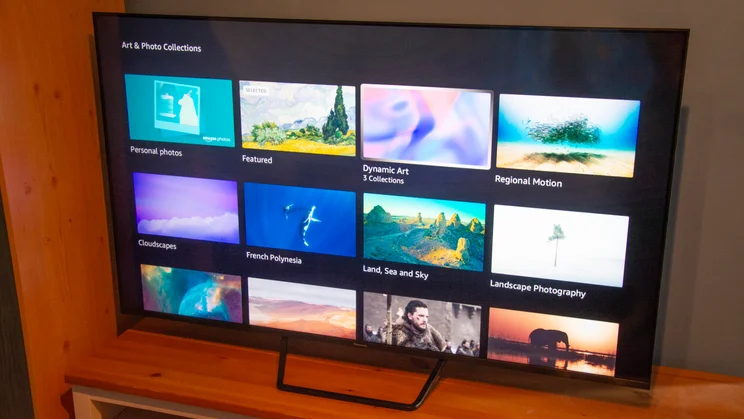
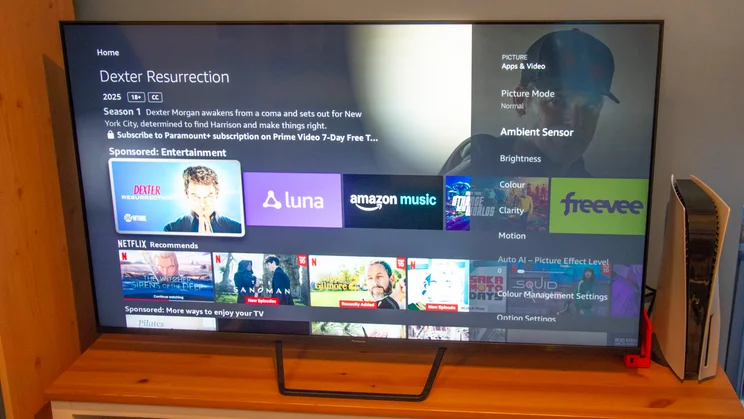
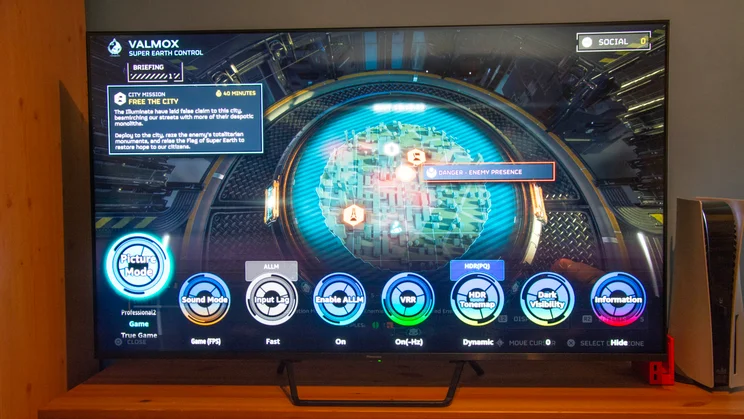
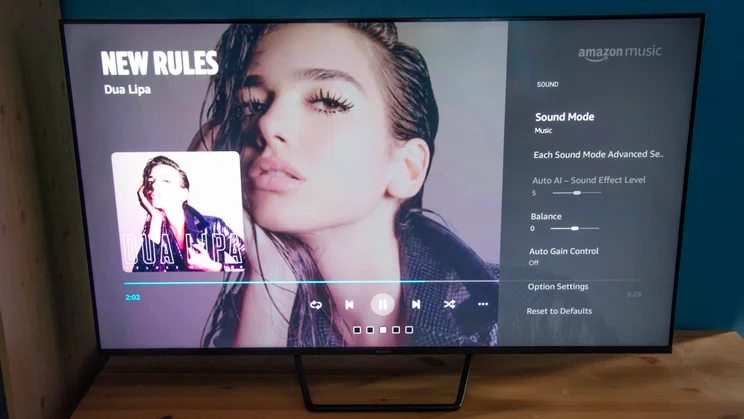
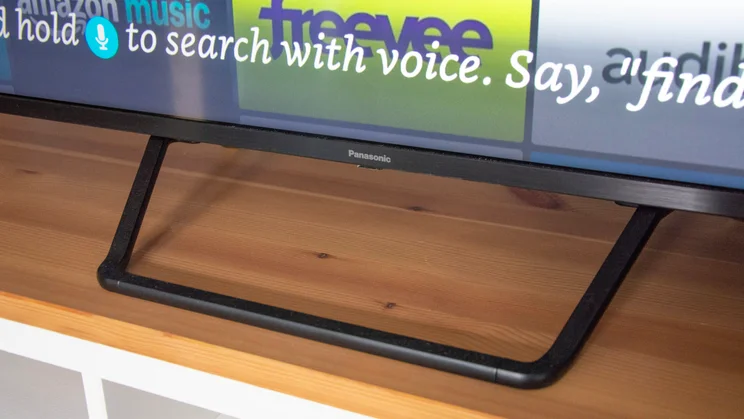
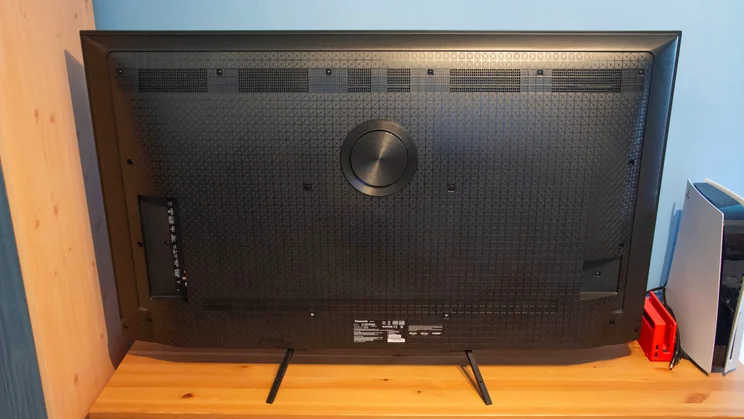
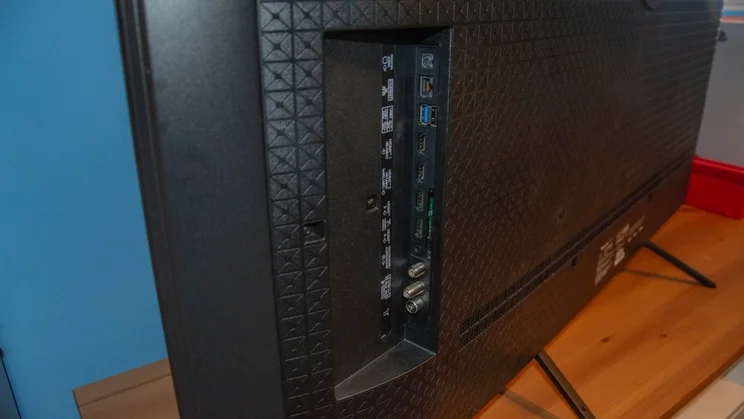
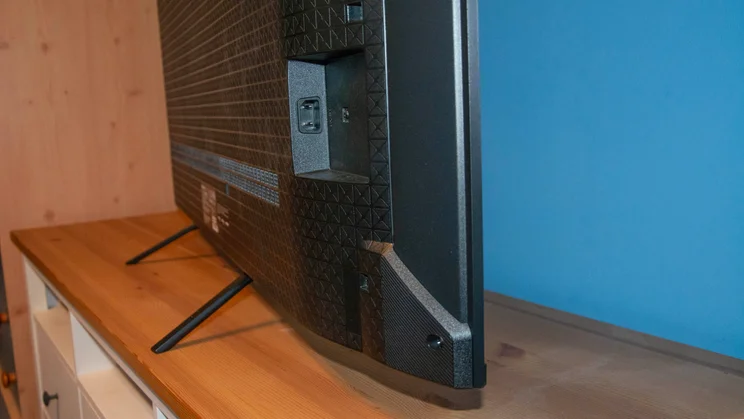

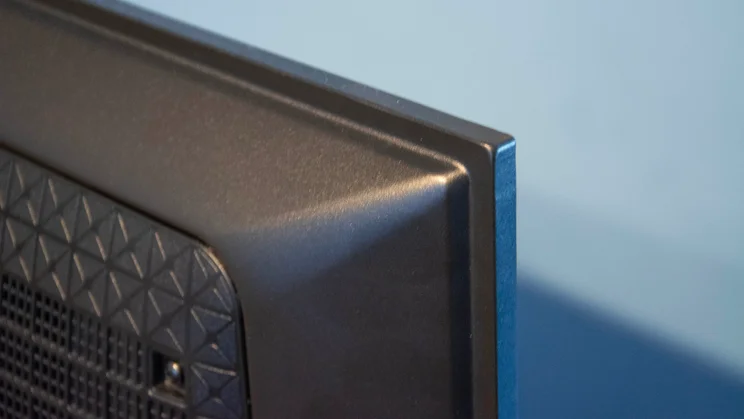
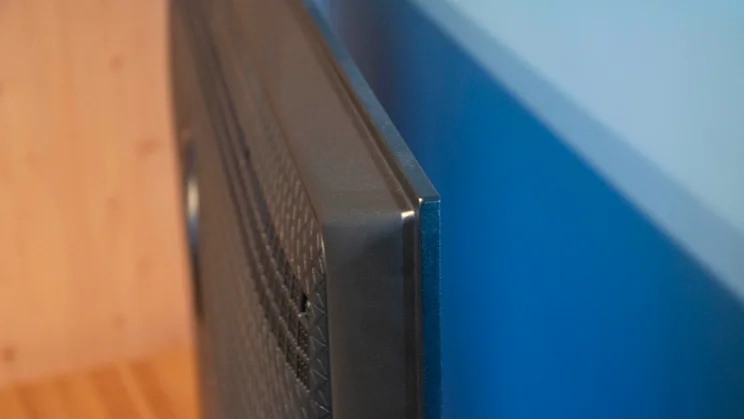
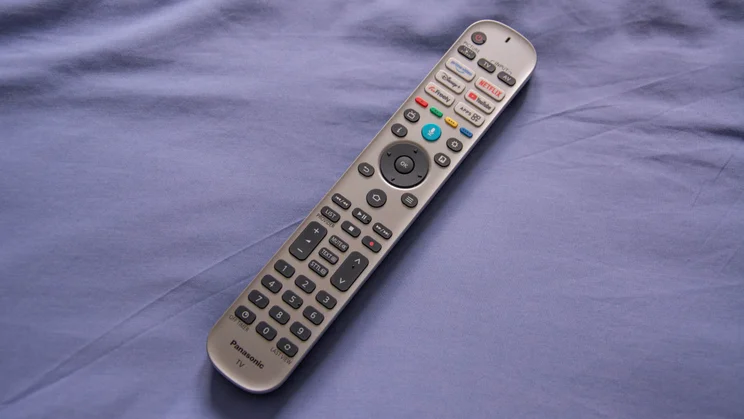
- Vibrant, engaging pictures
- Well-balanced sound quality
- Intuitive smart platform with Freely built-in
- Only two HDMI 2.1 ports
- Black level could be a little deeper
- Relatively narrow viewing angles
Panasonic has wowed us with some incredible OLED TVs over the past couple of years, delivering picture and audio quality rivalling any of its major competitors.
The Panasonic W95B is its attempt to achieve the same feat with Mini LED panel technology, and, for the most part, it’s a success. This attractive and relatively affordable television may not be the brightest of its breed, but its processing power, AI smarts, and software support result in a very well-balanced experience, regardless of whether you’re watching films, playing games or listening to music.
Panasonic W95B review: Key specifications
| Screen sizes available | 55in 55W95BEB, 65in 65W95BEB, 75in 75W95BEB and 85in 85W95BEB |
| Panel type | LCD with Mini LED backlight |
| Resolution | 4K/UHD (3,840 x 2,160) |
| Refresh rates | Up to 144Hz |
| HDR formats | HDR10, HDR10+ Adaptive, HLG, Dolby Vision IQ |
| Audio enhancement | 2.1-channel speaker system (50W), Dolby Atmos, Dynamic Theatre Surround |
| HDMI inputs | 4 (2 x HDMI 2.1) |
| Freeview Play compatibility | No, but carries Freely |
| Tuners | Satellite, digital |
| Gaming features | VRR, ALLM, AMD FreeSync, Game Mode Extreme, Game Control Board |
| Wireless connectivity | Bluetooth 5.3, Wi-Fi 6, Apple AirPlay, Apple HomeKit |
| Smart assistants | Amazon Alexa |
| Smart platform | Fire TV OS with Freely |
What you need to know
The W95B is Panasonic’s flagship LCD TV for 2025 and the only new Mini LED option from the brand this year. The step-down W93B, which isn’t coming to the UK, and W85B, which is, both use standard LED backlights with a quantum dot filter.
It’s powered by the Japanese manufacturer’s HCX Pro AI MkII processor – the same chip found in the Panasonic Z95B OLED set – and this unlocks various AI image and audio enhancements, including Auto AI mode, 4K Fine Remaster and AI HDR Remaster.























Refresh rates of up to 144Hz are supported when gaming, the full complement of HDR formats (HLG, HDR10, HDR 10+ Adaptive and Dolby Vision IQ) are present and correct, while Fire TV OS and Freely provide easy access to an enormous range of live and on-demand content without the need for a TV aerial or set-top box.
Price and competition
Given how pricey Panasonic’s flagship OLED TV is (the Z95B), I was pleasantly surprised to find the brand’s Mini LED equivalent starts at £899. That’s for the 55in model I’m reviewing here, but the larger screen sizes are similarly well-priced at £1,199 for the 65in, £1,599 for the 75in variant, and £2,199 for the 85in, which has been added to the range this year.
The closest competitor in terms of price is the TCL C7K. It looks fantastic value at just £799 for the 55in model. However, that’s not the cheapest entry point into Mini LED TVs; Amazon is selling its 55in Omni Mini LED for as little as £649. It’s an admirable performer for the money, but lacks finesse in the picture quality department.
Elsewhere, expect to pay more for similarly specified options. The 55in Hisense U7Q is priced at £1,299 for the 55in model, while LG’s top-of-the-range QNED93 is available in the same four sizes as the W95B but costs £1,199, £1,399, £2,199 and £3,299.
The two other Mini LED televisions we’ve tested this year, the Samsung QN90F and Sony Bravia 9, are even dearer. The former is available in a wider range of sizes but costs several hundred pounds more for each of its screen sizes; spending the £899 Panasonic wants for the 55in W95B with Samsung won’t even get you a 43in QN90F.
The Bravia 9, meanwhile, is the priciest of the lot at £2,599 for the 65in model, £2,999 for the 75in option and £3,799 for the 85in screen size. Such an outlay gets you searing brightness and first-rate picture quality, but the Bravia 9 will be well beyond the budget of most.
Design, connections and controls
I wouldn’t describe the Panasonic W95B as an absolute stunner, but it is a slender, attractive, and finely finished TV that will look good in most living spaces. The 55in model measures 1,226 x 300 x 777mm (WDH) with its stand attached and weighs around 14kg, so it doesn’t require a second pair of hands to set up or move around.























The stand itself comprises two centrally positioned metal feet that protrude from the back of the TV and are joined together by a third metal section in front. It’s a less premium look than the LG QNED93, and the section at the front means you’ll need to consider where you might position a soundbar. However, it’s a design that provides plenty of stability and can be accommodated on relatively narrow surfaces.























On the rear of the TV is a solid selection of ports. There are four HDMI inputs, but sadly, only two of these can handle 4K resolution at the panel’s maximum refresh rate of 144Hz. Alongside these are a Common Interface slot, a 3.5mm stereo mini jack for headphones or a wired subwoofer, two USB-A ports, an Ethernet port, two satellite inputs, a digital audio out, and an antenna/cable socket. Of course, there are also the obligatory wireless connection options, which come in the form of Bluetooth 5.3 and Wi-Fi 6. Apple AirPlay 2 and Apple HomeKit are supported, too.
You’ve got three main methods of sending commands to the W95B: the included remote, the Fire TV app and Amazon Alexa voice controls. Unlike the Z95B OLED, which has a far-field mic built into its chassis, the W95B requires you to press the Alexa button on the remote and speak into it. This works perfectly well, though.























The remote is rather large and quite heavy by modern standards, but this does mean it won’t be easily misplaced. It also means you’ve got pretty much every button known to man at your fingertips, including quick access options for Prime Video, Netflix, Disney+, YouTube and Freely, along with a Picture Mode switching button, EPG button and customisable MyApp button, which I chose to assign the Game Control Board menu to.
Smart platform
The past couple of generations of Panasonic TVs have moved away from the brand’s My Home Screen operating system in favour of third-party platforms from Amazon and TiVo. Premium models such as the W95B use the former, and it’s very well integrated into the TV’s interface.
Say what you will about how Amazon pushes its own content on Fire TV OS, but the platform provides access to a comprehensive selection of streaming services and apps. All your favourites are here, meaning you won’t ever struggle to find something to watch. Unless, like me, you suffer from terrible decision paralysis.























The content-rich platform is also responsive and intuitive to navigate, and makes reasonable recommendations, though, as noted previously, these are understandably Amazon-centric. And Alexa responds very efficiently to voice commands, which is great news if that’s how you primarily interact with your TV.
Panasonic’s partnership with the retail giant also means you can enjoy the Amazon Ambient Experience. This enables you to display artwork and widgets on the screen when not watching content, and there are plenty of eye-catching options.























In addition to Amazon smarts, the W95B comes with Freely built-in, which is a big boon. The Freely EPG allows you to watch broadcast content on its numerous supported channels with just an internet connection. It also enables you to access on-demand content on apps such as BBC iPlayer. Most people have at least a couple of subscriptions to streaming services these days, but free-to-air IPTV services like this very much still have a place in my household.
Image quality
The Panasonic W95B ships in Normal picture mode and looks pretty good straight out of the box, despite an excess of blue in the greyscale. Using a Portrait Displays C6 HDR5000 colourimeter, SpectraCal VideoForge Pro pattern generator and Calman Ultimate software, I measured an average multi-point greyscale Delta E error score of 11.7. Lighter shades of grey are particularly susceptible to taking on a bluish tint, which made black and white movies look pretty funky, but overall, the picture was very watchable.
Colour accuracy in this mode is par for the course for an out-of-the-box mode, too. Saturation sweeps returned an average Delta E error of 13.3, with any score above 3 being perceptible to the human eye. Purple hues were most noticeable off, but, as I’m regularly reminded by friends and family who don’t have technical TV knowledge, these discrepancies make little difference to their enjoyment.























Dynamic mode further widens the gap between how colours should look and how they’re reproduced on screen. Multi-point greyscale and saturation sweep Delta E scores of 18.1 and 19.5 reflect this, and I found skin tones stood out as looking artificial, especially in scenes flooded with background brightness.
However, I imagine many will favour this mode due to its bright and punchy presentation. The panel has impressive contrast and generally renders light and dark elements in any given scene successfully. I found dark areas in SDR content lacking detail occasionally, but the colour palette is undeniably striking.
During terrestrial broadcasts, I found the W95B communicated plenty of visual information, with fine details like wrinkles on faces and individual strands of fur on animals easily discernible. Panasonic’s AI-empowered 4K Fine Remaster and AI HDR Remaster upscaling tools were undoubtedly working their magic here, giving greater clarity and definition to lower-resolution content and expanding the range of colours displayed.























Colours don’t quite pop like they do when watching HDR material, but those who primarily consume SDR content, which remains a sizable proportion of people according to TV brands I speak to, will be more than pleased with the W95B’s performance.
When demanded of it, the W95B delivers on accuracy, too. Switching into Filmmaker Mode, greyscale and saturation sweep errors fell to just 1.4 and 1.1. Those scores are right up there with the best in the business. If you want SDR content delivered as the creator intended, you won’t find many TVs under £1,000 that do that as well as the Panasonic W95B.























The panel exhibited no obvious uniformity issues, though I did pick up on colour drop off when viewing the TV from wide angles. Greens started to look a muddy grey, while oranges, pinks and reds lost vividness. This wasn’t particularly noticeable from the extremities of my 2m long sofa, but any further than that and the impact becomes more evident.
Motion handling is one of the W95B’s areas of strength. With all motion processing switched off, I noticed hints of blurring around the titular subject’s face and stripey shirt during the Sarah on a Hammock scene on the Spears & Munsil UHD Benchmark Blu-ray. It wasn’t unduly distracting, however, and Panasonic’s Intelligent Frame Creation (IFC) option lets you smooth things out exactly to your liking. By creating a Custom IFC profile with manually adjusted levels of Blur Reduction and Film Smoothing, I achieved a sweet spot in which fast-moving objects were rendered fluidly without succumbing to the soap opera effect.
HDR performance
The W95B has the brightness, colour coverage and accuracy to do justice to HDR material mastered at 1,000 nits. It also supports every HDR format going, meaning that no matter what your source, you’re getting the optimal output.
It falls a little short of the LG QNED93 in the brightness department, and colour gamut coverage was a smidge behind some of the competition at 92% of the DCI-P3 colour space. That said, 70% coverage of the BT.2020 gamut is decent and ensures that UHD material is handled admirably.
While not searingly bright like the Bravia 9, the W95B’s luminance levels ensure it remains watchable in rooms with a lot of ambient light. How bright it goes depends on the level its Adaptive Backlight Control option is set. The default settings for this vary across the different picture modes, and I recorded values for each mode at each setting.























The highest of these figures was achieved in Auto AI mode, which returned a peak brightness of 1,323cd/m2 on a 25% white window on a black background. The W95B hit around 1,200cd/m2 on a 10% window and 700cd/m2 on a full-field pattern across its Dynamic, Normal and Auto AI modes.
The HDR pictures in these modes are attention-grabbing, with bright scenes bursting to life in an arresting manner. Primary colours pop to offer a contrast-rich visual spectacle. Images could be more accurate, however. Greyscale multi Delta E errors were recorded in the teens and above 40 when I ran P3 saturation sweeps inside the BT.2020 colourspace.
The W95B’s Filmmaker Mode, True Cinema and True Game modes fare much better where accuracy is concerned, but sacrifice some brightness. I recorded peak brightness in Filmmaker Mode at 1,089cd/m2 on a 10% window and 634cd/m2 on a full-field pattern, with greyscale and P3 saturation sweep errors measured at just 3.3 and 7.3.























That’s a trade-off I was happy to make. When watching 4K HDR Blu-rays and streaming HDR content across Netflix, Prime Video, Disney+ and Apple TV+, there was ample brightness to draw out details and give the colour palette impact without becoming unnaturally balanced.
Panasonic states that the W95B has 2.5x the number of dimming zones of last year’s W95A. I can’t verify that claim as I’ve not tested the 2024 model, but I counted 24 x 14 (336) independent zones on the W95B. I’ve seen reputable reports of 192 zones on the 65in W95A, suggesting a sizeable increase here.
More important than the number of zones, however, is how they’re put to work. And I was impressed by the W95B in this regard. The black level wasn’t quite as inky as you’d get on an OLED panel, but tonally and texturally, colours looked spot-on. Bursts of brightness didn’t disrupt the viewing experience, nor did they detract from accurately rendered fine details or produce egregious blooming.























It’s not the last word in brightness or colour accuracy, and it has no protection against pesky reflections, but overall, the W95B offers a very satisfying HDR experience for the money.
To test the Panasonic W95B, I used Portrait Displays Calman colour calibration software.
Gaming
The W95B only has two HDMI 2.1 ports capable of 4K/120Hz on a current-gen console or 4K/144Hz if you’ve hooked it up to a punchy gaming rig. That’s a disappointment when competitors like LG and Samsung support higher refresh rates on all four of their HDMI inputs.
It’s not the end of the world, however, and the W95B delivers a thoroughly enjoyable and responsive gaming experience. Using the Leo Bodnar 4K HDMI Video Signal Lag Tester, I measured input lag at 13.2ms with a 3,840 x 2,160 (60Hz) source in the TV’s Game and True Game modes. That’s not quite as impressive as the 9.6ms achieved by the LG QNED93, but it is more than quick enough for gameplay to feel extremely fluid. A 1,920 x 1,080 (120Hz) signal produced lag of just 5.2ms, regardless of the picture mode selected.























On top of those rendering times, there’s support for Auto Low Latency Mode (ALLM), Variable Refresh Rate (VRR), AMD FreeSync Premium, and Panasonic’s Game Board. The latter is a handy on-screen menu that lets you quickly toggle VRR on or off, adjust how the panel handles tone mapping, increase visibility in dark areas, and change picture modes.
I typically gravitated towards the True Game mode. This delivered decent brightness on a full white screen (633cd/m2) and peaks of 1,125cd/m2 on a 10% window, but crucially is very accurate when reproducing greyscale and colours. I measured Delta E greyscale errors of 3.3 using a colourimeter, pattern generator and Calman’s Ultimate software, while P3 saturation sweeps within the BT.2020 colourspace were recorded at around 7. These scores are both above the visible threshold of 3, but close enough to it to retain a strong sense of artistic intent.























The basic Game mode trades accuracy for a bit of extra brightness, which might be more your bag if you’re not gaming in a dark room. In this mode, the W95B hit 1,286cd/m2 on a 10% window and just shy of 700cd/m2 on a full-field white screen, but Delta E scores for greyscale and P3 sweeps came in at 12 and a whopping 78, respectively.
Whether I was slaughtering bugs and robots while defending Super Earth in Helldivers 2 or trying to outrun the Night’s Tide in Elden Ring Nightreign, the Panasonic W95B delivered a colourful, vivid and stutter-free gaming experience. It wasn’t able to do a huge amount to overcome the poorly optimised textures of Wuchang: Fallen Feathers, but it did manage to squeeze an impressive amount of visual appeal out of the diverse colour palettes on show across the locales of 17th-century China.
Sound quality
Panasonic’s range-topping Z95 OLED has the best-sounding built-in audio system of any premium TV I’ve heard. Its Technics-tuned 7.1-channel 360 Soundscape Pro setup is incredibly immersive, and pretty much removes the need for a soundbar. The W95B makes do with a pared-back arrangement of 2.1 channels, but uses what it has to good effect.
You’ve got a healthy selection of presets to choose from, including an Auto AI mode that adjusts audio on the fly based on what you’re watching, loads of ways to customise your options, and the total output of 50W (2 x 15W plus 20W woofer) was more than enough to fill my viewing room.























I found dialogue a little hard to make out in Auto AI mode, so ended up creating a custom EQ using the eight-band equaliser and toggling Dialogue Enhancement on. While I didn’t get surround sound immersion, I could hear every word in dialogue-heavy scenes, and the speakers projected sound a decent distance beyond the confines of the panel.
Dolby Atmos is supported, and the performance here was about what I‘d expect from a 2.1-channel system. The W95B hinted at a sense of verticality during the classic Atmos demo clip “Leaf” and placed positional cues relatively accurately, but if you want to lose yourself in a bubble of sound, you’ll need a multi-channel soundbar with up-firing drivers and rear speakers.























The 20W woofer cleanly articulates low-end frequencies even at high volumes, although those craving blockbuster levels of impact will again need to temper their expectations. The purr of engines in Mad Max: Fury Road and the crashing of running Dinobots in Transformers: Age of Extinction were just a little tamer than I’d hoped for. For general viewing, however, the W95B is very nicely balanced.
Balance aside, I particularly enjoyed the Stadium and Music modes. The former expands the soundstage to successfully amplify the feeling of being at the heart of sporting action without completely gutting the commentary. The latter, meanwhile, is surprisingly worthwhile enabling if you use your TV to listen to playlists or songs on YouTube or Spotify. Musical arrangements feel like they’re being projected further out of the TV towards you, and the W95B demonstrates a rhythmic astuteness that’s rare in televisions.
Verdict
The Panasonic W95B doesn’t make quite the same waves as its Z95B OLED stablemate, but it’s a very capable television and one of the most well-rounded Mini LED models around.
Its brightness levels won’t burn holes in your retinas, but the price won’t burn a huge hole in your pocket either, and luminance is high enough for it to function as a living room television without issue. The pictures it produces are never anything less than engaging, it can be highly accurate when necessary, and it pairs impressive visuals with a sound system that performs better than most built-in 2.1-channel arrangements.
Fire TV OS and Freely mean you’re covered on the content front, and gamers are well-catered for too, though unfortunately only on two of the four HDMI ports. If you’ve got a grand to spend on a new TV, the Panasonic W95B is well worth adding to your short list.



